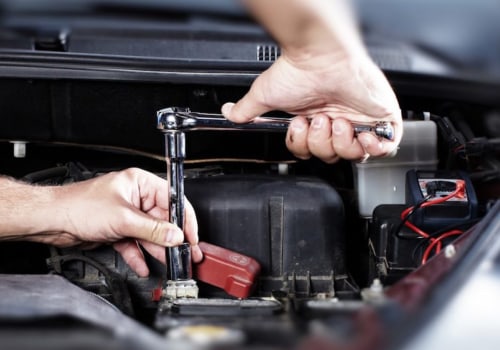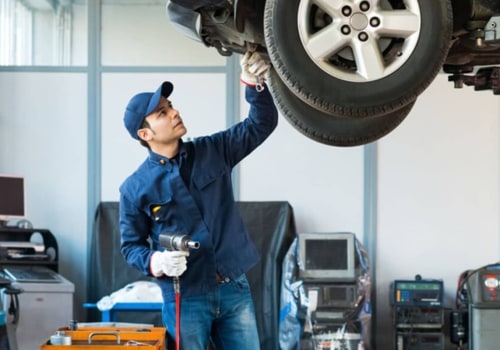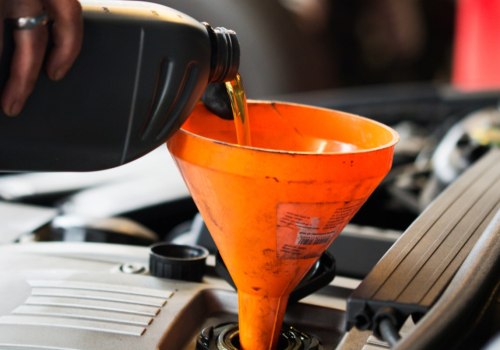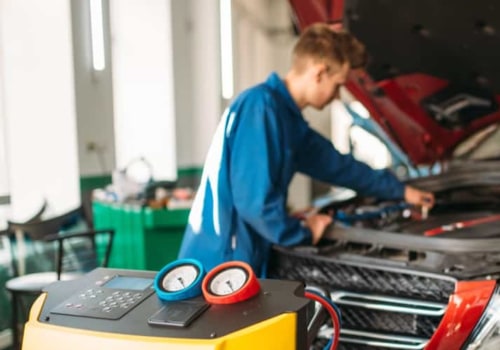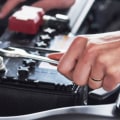The following are some auto parts that need to be inspected and replaced more frequently than others: Tires. Of all the parts of a car, tires are arguably one of the most important, as they are always in contact with the road. Whether you're planning to buy a used Japanese car or a new vehicle, you'll have it with a machine that contains approximately 30,000 parts (if you count each component down to the smallest screws). It can be quite difficult to identify which is the “most important”.On the other hand, there are some main parts that you should always inspect to ensure that your driving experience is safe, comfortable and smooth.
All vehicles are powered by an engine, and most cars use an internal combustion engine that runs on gasoline. Often, engines are identified based on the number of cylinders they have, and each cylinder has its own combustion chamber. This means that engine size is an important factor affecting the overall power of a car. Other factors, such as transmission type and burn time, determine a vehicle's capacity. It goes without saying that the engine can be considered the heart of your car and requires regular monitoring.
Imagine how frustrating it would be if your battery died while driving in the middle of nowhere. A car battery is one of the most neglected parts of a vehicle, especially since there are no warning signs that tell you that you are about to die. If you are using your vehicle in a very urban area, it would be easy to request roadside assistance when the battery runs out. On the other hand, if you plan to use your vehicle on a long trip, the best thing would be to ask an expert to test your battery. If you start to notice a malfunction of the electrical components, if it takes a little longer to start the engine, or if you see the battery light on the dashboard flickering, then it's time to consult a professional technician.
Most car owners always pay attention to their fuel gauge and speedometer, but other instruments on the dashboard are just as important. For example, the tachometer allows you to know the status of your engine. You can identify common problems, such as oil leaks, when you look at the oil pressure gauge. By paying attention to other dashboard instruments, you can avoid major engine problems in the future. I recently bought a car that was 19 years old with about 135,000 km. I think the mileage was quite low considering age, but I found that there were a lot of items that needed attention if I wanted the car to run smoothly and maintain its useful life for many more years of pleasant driving.
Most of the work involved electronic sensors. Most of them need to be changed or at least cleaned. Fuel injectors should also be inspected and cleaned. The timing belt had never been changed and some of the belts were worn and cracked, so I recently replaced them. It was a great job, but I succeeded.
In addition, shock absorbers wear out and can cause a rough ride if they lose their elasticity, so it's true that tires, engine, and battery are the most important parts that require maintenance attention after a car warranty expires. I should have mentioned the importance of the temperature gauge, the neglect of which could cause serious damage to the engine. You won't go anywhere if your tires have worn out. The longevity of your tires will ultimately depend on the brand. Some can last 20,000 miles, while others can travel up to 50,000 miles.
It is also necessary to perform frequent tire rotations to ensure that your vehicle continues to perform optimally. It is recommended to perform these rotations once every 7,000 miles or once every 6 months, whichever comes first. Timing belts are only found in approximately 33 percent of all cars in the United States. If yours breaks, the engine will not be able to start. If you suspect that the timing belt is worn, you can visually inspect it to see if the belt is crimped or if the teeth are misaligned.
Timing belts should be replaced anywhere between 60,000 and 100,000 miles. Taking your vehicle to a mechanic will often allow a professional to detect when yours needs a replacement. Spark plugs give your car's engine the spark it needs to start. Without that initial ignition, you won't be able to start your vehicle and take it to the road. Symptoms that the spark plug is in its later stages include lower fuel economy, poor acceleration, and problems starting the car.
Any of these symptoms is reason enough to see a mechanic and see if you need a spark plug replacement. It is recommended to inspect spark plugs once every 30,000 miles, but usually they don't need to be replaced until 80,000 miles. Your engine contains an air filter to expel air from the mechanism. Over time, this component can become clogged with dirt, which means that the engine cannot operate as effectively. You should make sure to replace this filter frequently.
Most of the time, it is recommended to replace the filter once every 7500-10 000 miles; however if you're constantly driving on rural roads you may need to change it more often. All engines need regular oil changes. Oil is responsible for keeping different components of your engine in cohesive motion with minimal friction over time; this oil becomes dirty and needs changing in order for your engine remain in good condition. Consult your vehicle's owner's manual for how often manufacturer suggests servicing oil; most modern cars suggest oil changes between 3 000-5 000 miles but some engines can travel 7 000 miles or more between changes. A car is made up of many complex parts; however tires, engine, battery, timing belt, spark plugs, and air filter require special attention when it comes maintenance in order for your vehicle continue performing optimally for many years come.
